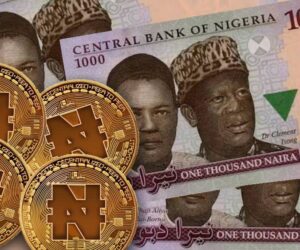The US Dollar Index has become one of those indicators people hear about often but rarely stop to explore.
It’s mentioned in financial reports, tied to global market sentiment, and used by economists to understand how the world views the dollar at any given moment.
Even though it sounds technical, the idea behind it is pretty simple. The index shows how the dollar performs against a selected group of major currencies. When it rises, the dollar is gaining strength. When it falls, the dollar’s losing ground.
What makes the index more interesting is how widely its influence spreads. The number itself may sit quietly on a chart, but its movement shapes trade decisions, business planning, investment strategies, and even the cost of borrowing.
In a global market where everything is connected, the DXY has become a silent signal that tells a much bigger story about confidence, risk appetite, and economic stability.
How Traders and Analysts Use the Index Day to Day
One of the first things people discover when they start studying the dollar index is that it reacts to far more than interest rates or political headlines. It captures a blend of sentiment, economic pressure, and cross-market behaviour.
Because of this, many traders check the index to understand whether the dollar’s gaining strength against other major currencies or whether it’s starting to lose momentum.
Some traders prefer to get this information by viewing DXY trading through platforms like Exness. It gives them an immediate look at how global conditions are influencing the dollar. They might compare today’s movement with last week’s or look at how the index responds when central banks release new data. Even small changes tell traders something about the current mood in global finance.
What a Strong or Weak Dollar Index Means
A rising dollar index suggests that the dollar’s performing well compared with its currency basket. When that happens, imported goods tend to become more affordable for US-based companies. On the other hand, exporters may feel pressure because their products become more expensive for buyers overseas.
A weaker index tells a different story, it often means global investors are shifting toward other currencies or looking for different opportunities when uncertainty rises, businesses and policymakers pay attention to these changes because the DXY offers early hints about how global markets might behave in the weeks ahead.
Why the Dollar Index Influences Global Decisions
People sometimes forget how central the dollar is to global trade. Many contracts, loans, and commodity prices are tied to it. When the index moves, it affects the cost of raw materials, transportation, and international borrowing.
A stronger dollar can stretch budgets for companies that work heavily with imports. It can also make debt repayments more expensive for countries and businesses with dollar-denominated loans.
A weaker dollar often has the opposite effect. These shifts ripple through global industries in ways that influence everyday decisions, from manufacturing schedules to investment plans.
Looking Beyond Currency Markets
Although the DXY tracks currencies, it indirectly touches other markets too. Stock indexes, energy prices, and even agricultural goods respond to changes in the dollar.
A strong dollar can weigh on commodity prices since it makes those goods more expensive for international buyers. Equity markets sometimes move in the opposite direction from the DXY if traders see higher dollar strength as a sign of caution.
To understand whether the broader market agrees with the dollar’s direction, some investors check how certain stocks behave at the same time.
They may look at Tesla stocks trading on Exness to see whether a similar cautious or confident tone appears in equity markets. They’re not expecting a direct link. They’re simply gauging whether different parts of the market are reacting to the same economic signals.
How Central Banks Influence the Dollar Index
Central banks influence the index in powerful ways. When they adjust interest rates, issue statements, or release inflation data, the dollar usually reacts quickly. A rate increase often strengthens the dollar because investors seek higher returns. A rate cut can weaken it by reducing demand.
Traders watch these moves closely not only for what they mean today, but for the message they send about the future. If a central bank signals that more rate changes are coming, the index often moves ahead of time as traders prepare for the shift.
Business Planning and the Role of the Dollar Index
Companies that operate internationally rely on the index to help them plan, a strong dollar might encourage a business to import more goods or expand partnerships in certain markets, a weaker dollar might push companies to focus more on domestic growth or diversify their suppliers.
Even businesses that don’t trade internationally feel the effects indirectly, if suppliers raise prices due to currency pressure, companies must adjust their budgets or rethink pricing strategies, understanding how DXY changes influence these decisions helps leaders stay prepared rather than reactive.
Risk Management and Market Uncertainty
Risk managers often use the US Dollar Index as a gauge of global sentiment. When the index climbs quickly, it sometimes signals a move toward safety, especially in times of geopolitical stress. A falling index can indicate that investors are shifting toward higher-risk assets or exploring opportunities elsewhere.
This makes the DXY a helpful guide for companies preparing for uncertain periods.
By watching the index, businesses can build strategies that cushion them against sudden changes in supply costs or international demand.
How Long Term Shifts Reveal Bigger Trends
Short bursts of activity in the index are common, but long stretches of strengthening or weakening usually point to broader economic themes.
A consistently strong dollar could reflect strong growth expectations or rising interest rates. A long decline might suggest softer economic sentiment or increased global competition.
Analysts study these long term movements to identify structural changes in the global economy. These insights help companies position themselves better by adjusting their investment timelines, expansion plans, or financing strategies.
Why the Dollar Index Still Matters Today
In a world where digital assets and new trading tools keep emerging, the US Dollar Index remains a core indicator, it’s not flashy and it doesn’t move dramatically every day, but the information it provides is still invaluable. It offers a straightforward way to understand global confidence and how money flows through international markets.
Businesses, policymakers, and investors all rely on this reading to understand how global sentiment shifts from month to month. The index helps them see past local market noise and focus on larger economic forces.
Final Thoughts
The US Dollar Index plays a bigger role in today’s global economy than most people realize. It reflects how traders feel about risk, how businesses prepare for upcoming challenges, and how countries navigate international pressure. Even though it’s built on a simple comparison of currencies, the insights it offers are far-reaching.
For anyone trying to understand global markets or make smarter financial decisions, the DXY remains a valuable signal. It’s more than a chart or a number. It’s a reflection of how the world sees the dollar and a tool that helps businesses and investors stay grounded in a fast-changing economic landscape.











